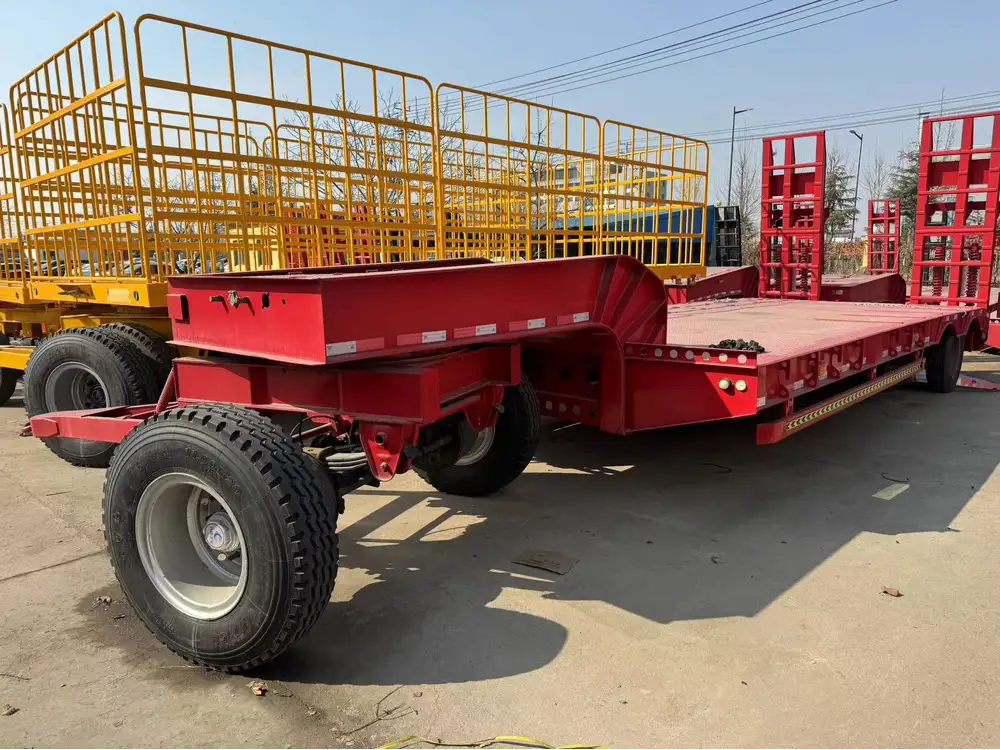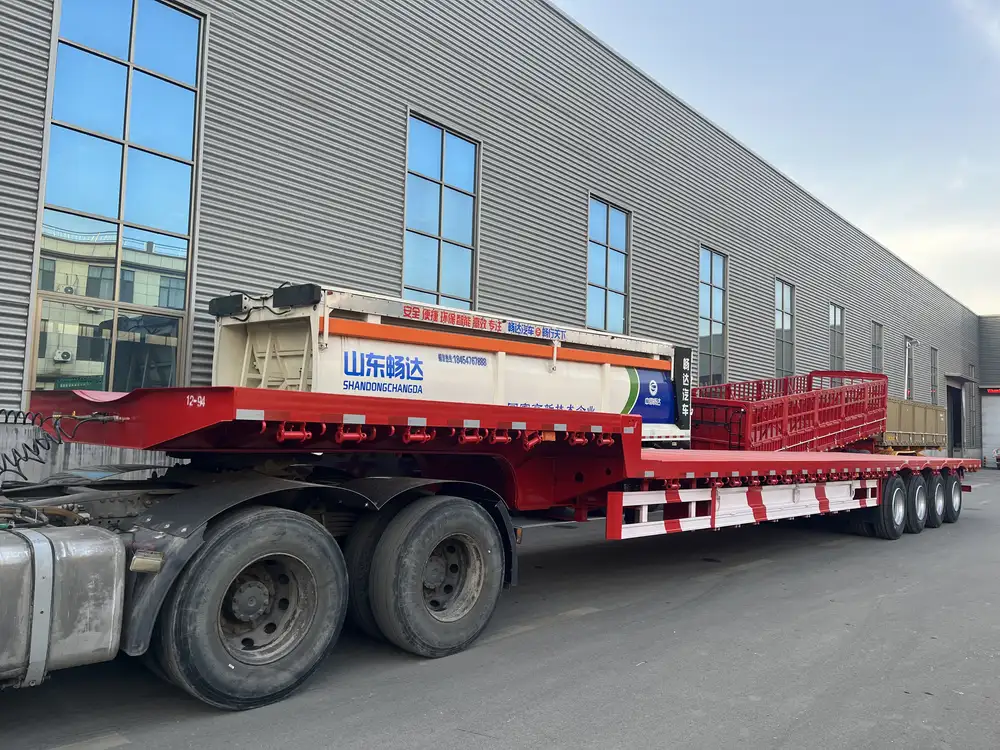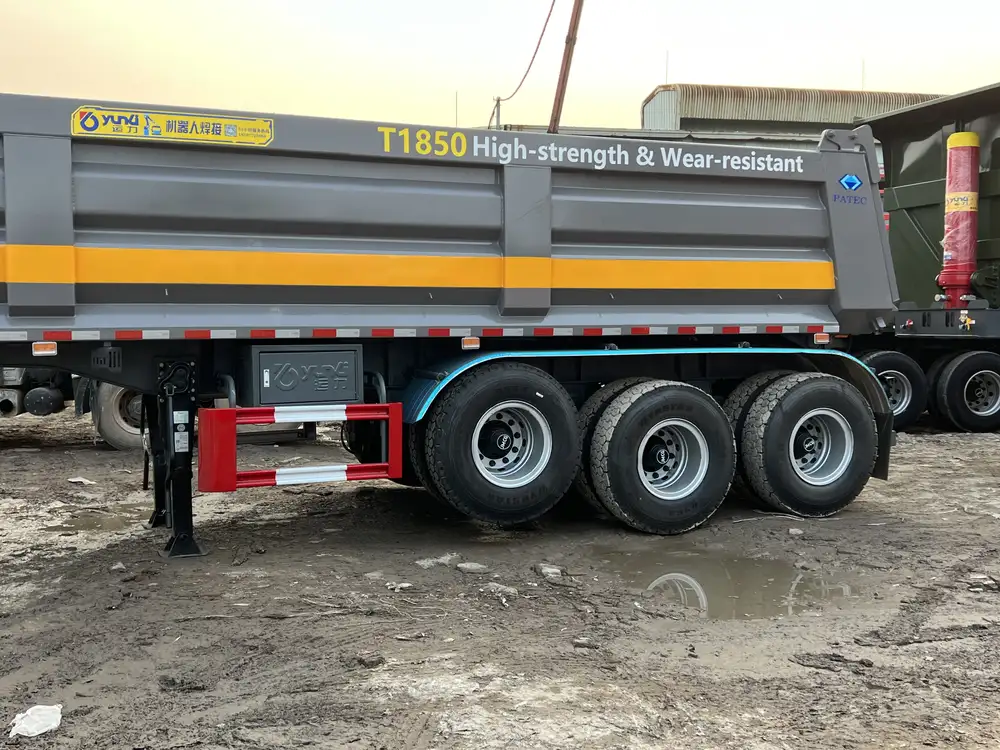When it comes to heavy-duty hauling, dump trailers represent a critical component in construction, landscaping, and various industrial applications. The significance of knowing how much a 24-foot dump trailer weighs cannot be overstated, especially when considering payload capacities, towing vehicles, stability on the road, and legal weight limits. In this detailed exploration, we will deluge into the specifics regarding the weight of a 24-foot dump trailer and explore multiple facets that affect its overall weight, applications, and best practices for use.
The Basics of Dump Trailer Weights
What Is a Dump Trailer?
A dump trailer is a specialized trailer designed to haul and unload various materials, including dirt, gravel, sand, and construction debris. The key feature that distinguishes dump trailers from standard flatbeds is their hydraulic lift mechanism, which allows for efficient unloading directly at the job site. The weight of these trailers can vary significantly based on several factors, including size, construction materials, and design.

Standard Weight Range of 24-Foot Dump Trailers
A 24-foot dump trailer typically weighs between 6,000 and 8,000 pounds (or approximately 2,722 to 3,629 kilograms) when empty. Several elements can influence this weight range, which leads us to a deeper investigation into the factors that affect dump trailer weights.
| Trailer Type | Weight (Empty) | Common Uses |
|---|---|---|
| Standard Dump | 6,000 – 8,000 lbs | General hauling construction debris |
| Heavy-Duty Dump | 8,000 – 12,000 lbs | Heavier materials, longer hauls |
| Lightweight Dump | 4,500 – 6,500 lbs | Landscaping and small loads |
Factors Influencing the Weight of a 24-Foot Dump Trailer
1. Construction Material
The weight of a dump trailer is significantly influenced by the materials used in its construction. Common materials include:
- Steel: Durable but heavier, contributing to a higher overall weight.
- Aluminum: Lighter than steel, provides better payload capacity but may be less durable for heavy use.
- Composite Materials: Emerging alternatives that can be lighter yet maintain strength and durability.

2. Design and Features
The design configurations of dump trailers can vary widely:
- Single Axle vs. Tandem Axle: A single axle design significantly reduces weight but limits payload capacity. A tandem axle, while heavier, can support more weight, making it ideal for larger loads.
- Side Height and Depth: The height and depth of the trailer sides also contribute to weight, with taller sides generally adding weight but increasing capacity for bulkier materials.
3. Hydraulic Systems
The hydraulic system used for lifting the trailer bed adds weight. A more robust hydraulic mechanism may be necessary for heavier-duty applications, but this can substantially increase the total weight of the trailer. There are generally two types of hydraulic systems:
- Single-Acting: Contains a single hydraulic cylinder and is generally simpler and lighter.
- Double-Acting: More complex with additional components, allowing for greater flexibility in lifting capabilities at a higher weight.
4. Tire Size and Type
Larger tires, particularly those designed for off-road use, can add weight. Moreover, tire composition influences overall mass, with some specialized tires designed for high loads being heavier due to their construction.

Importance of Knowing the Weight
1. Payload Capacity Calculation
Understanding the trailer’s weight is necessary for calculating its payload capacity. The general guideline is to subtract the trailer’s weight from its total permissible gross vehicle weight rating (GVWR). For instance, if a 24-foot trailer has a GVWR of 14,000 pounds and a weight of 7,000 pounds, the maximum payload capacity would be:
[ \text{Payload Capacity} = \text{GVWR} – \text{Trailer Weight} = 14,000 \, \text{lbs} – 7,000 \, \text{lbs} = 7,000 \, \text{lbs} ]2. Towing Vehicle Compatibility
Knowledge of the dump trailer’s weight helps in selecting an appropriate towing vehicle. It is vital to ensure that the tow vehicle has adequate towing capacity to handle not only the trailer weight but also the maximum payload to prevent vehicle damage or accidents.

3. Regulatory Compliance
Compliance with state and federal regulations regarding weight limits is crucial. Exceeding weight limits can lead to fines, accidents, and safety issues. It is vital to be aware of local weight limits, which can differ based on vehicle type and trailer configuration.
Key Considerations When Using a 24-Foot Dump Trailer
1. Safety Practices
- Loading Techniques: Distribute weight evenly to maintain balance. Loading heavier items towards the front helps in stability.
- Brake Check: Ensure the trailer brakes are functioning correctly, particularly when loaded, for effective stopping power.
- Tire Inspection: Regularly check tire pressure and tread to ensure safe handling, especially when carrying heavy loads.

2. Maintenance Tips
- Lubrication: Regularly lubricate the hydraulic components to ensure smooth operation.
- Structural Integrity: Periodically inspect the frame and suspension for signs of wear or damage.
- Clean Debris: After each use, clean dirt and debris to prevent corrosion and maintain function.
3. Environmental Considerations
When operating a dump trailer, it’s essential to consider the environmental impact:
- Minimize Soil Erosion: Avoid dropping heavy loads on soft ground to reduce soil damage and erosion.
- Waste Management: Follow regulations for disposing of construction debris in a manner that is environmentally conscious.
4. Best Practices for Transport
Engaging in safe transportation practices when hauling a dump trailer ensures both road safety and longevity of the equipment:
- Speed Management: Adhere to speed limits, particularly when loaded, to prevent accidents due to reduced braking capability.
- Awareness of Clearance: Be mindful of overhead clearances, especially when transporting bulky materials.

Conclusion: Maximizing Efficiency with a 24-Foot Dump Trailer
Understanding the weight of a 24-foot dump trailer is pivotal for professionals in construction and landscaping fields. From calculating payload capacities to ensuring towing vehicle compatibility and regulatory compliance, the implications of trailer weight extend far beyond simple metrics. By keeping informed about design factors, maintenance practices, and safe transportation techniques, users can harness the full potential of their 24-foot dump trailers—maximizing efficiency while minimizing risks.
Frequently Asked Questions (FAQs)
What is the GVWR for a typical 24-foot dump trailer?
- The GVWR can range from 10,000 to 14,000 pounds, varying with trailer design and construction materials.
Can a 24-foot dump trailer fit on a standard vehicle hitch?
- Most 24-foot dump trailers require a heavy-duty hitch setup, often rated for at least 10,000 pounds.
What is the average lifespan of a dump trailer when maintained properly?
- With proper care and maintenance, a dump trailer can last anywhere from 10 to 20 years, depending on usage frequency and conditions.
What materials are typically used for a dump trailer bed?
- Common choices include steel for heavy-duty trailers, aluminum for lighter models, and often a wood floor, or composite materials for specific applications.
By addressing common user queries and presenting comprehensive information, we ensure that those interested in 24-foot dump trailers are equipped with the knowledge they need to make informed decisions.



